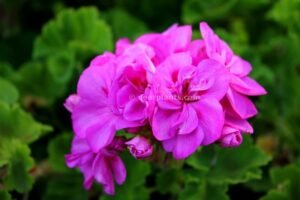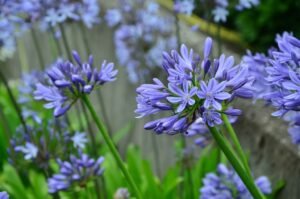Giant montbretia (Crocosmia masoniorum) is a bulbous (or similar) plant that can grow 50cm – 1.5m tall and 10cm – 50cm wide. In this growing guide we’ll learn the cultivation details and how to plant Giant montbretia (Crocosmia masoniorum).
This plant is commonly known as giant montbretia.
This is a deciduous plant that takes 2-5 years to reach full maturity.
In this article
Plant profile
Common name: giant montbretia
Scientific name: Crocosmia masoniorum
Plant type: Bulbs, Perennials
Habit: Clump-forming
Height: 50cm – 1.5m
Spread: 10cm – 50cm
Foliage: Deciduous
Sunlight: Partial shade
Soil: Chalk, Clay, Loam, Sand
Moisture: Moist but well drained
Garden type: City & Courtyard Gardens, Informal Garden, Mediterranean Garden, Rock & Gravel Garden, Wildflower meadow
Planting type: Cut Flowers, Flower borders and bedding, Low Maintenance, Wall-side Borders
Other characteristics: RHS Award of Garden Merit
Seasonal colors
| Season | Stem | Foliage | Flower | Fruit |
|---|---|---|---|---|
| Spring | ||||
| Summer | ||||
| Autumn | ||||
| Winter |

How to plant Giant montbretia (Crocosmia masoniorum) – Dinesh Valke from Thane, India, CC BY-SA 2.0, via Wikimedia Commons
Bulbous plants are found all over the world in habitats as diverse as woods, meadows, riverbanks, rocky hills and mountains.
There are bulbs suitable for all types of garden design.
Most have their own limited flowering season, but with careful planning it is possible to combine this period of interest with the other plants in the garden.
How to plant
In this section we will learn how to plant Giant montbretia (Crocosmia masoniorum), know its needs in terms of soil, watering and sun exposure.
Soil
Giant montbretia (Crocosmia masoniorum) is a plant that adapts to all types of soils, chalk, clay, loam or sand.
-
The chalky soil is pale and contains chunks of calcium-rich rock. It is a fertile and well-draining soil, almost always alkaline.
-
Clay soil is composed of more than 25 percent clay particles. These particles have a high moisture holding capacity and the soil is heavy to dig and can be waterlogged in winter (dry in summer).
-
The loam soil is dark, rich in organic matter but balanced in minerals. It offers the best of all worlds, retaining enough water for the plants, but allowing excess moisture to drain away. This is the most desired type of garden soil, perfect for most plants.
-
Sandy soil is light, porous and very easy to drain. It is a soil poor in organic matter and nutrients. It is composed of relatively large mineral particles that allow water to drain quickly.
It is not very sensitive to soil acidity or alkalinity and grows well in soils with pH acid, alkaline or neutral.
Regarding drainage, Crocosmia masoniorum likes to grow in moist but well drained soil.
Sunlight
Giant montbretia (Crocosmia masoniorum) should be grown in partial shade places.

Cultivation profiles – Growing Giant montbretia (Crocosmia masoniorum) – Guy Waterval, Apache License 2.0, via Wikimedia Commons



